- Sweet Peppers: Sowing Dates Guide for Seedlings
- Determining Your Last Frost Date
- Indoor Seed Starting
- Transplanting Outdoors
- Conclusion
- Ideal Sowing Dates for Sweet Pepper Seedlings
- Early Spring Regions
- Mid-Spring to Early Summer Regions
- Late Spring to Early Fall Regions
- Sowing Dates for Sweet Peppers in Different Regions
- North Region
- South Region
- East Region
- West Region
- Sowing Sweet Pepper Seedlings with Picking
- Step 1: Gather the necessary materials
- Step 2: Prepare the seedling trays or pots
- Step 3: Sow the sweet pepper seeds
- Step 4: Label the trays or pots
- Step 5: Place the seedling trays or pots in a warm and bright location
- Step 6: Picking the strongest seedlings
- Step 7: Transplant the seedlings
- Sowing Sweet Pepper Seedlings without Picking
- Factors to Consider when Sowing Sweet Pepper Seedlings
- Tips for Successful Sweet Pepper Seedling Sowing
- 1. Start with high-quality seeds:
- 2. Proper timing:
- 3. Use a well-draining soil mix:
- 4. Provide adequate light:
- 5. Maintain consistent moisture:
- 6. Harden off seedlings before transplanting:
- 7. Transplant with care:
- 8. Provide proper support:
- Preparing the Soil for Sweet Pepper Seedlings
- 1. Choose the right location:
- 2. Clear the area:
- 3. Loosen the soil:
- 4. Add organic matter:
- 5. Adjust soil pH:
- 6. Incorporate fertilizer:
- Maintaining and Caring for Sweet Pepper Seedlings
- 1. Watering
- 2. Providing adequate light
- 3. Transplanting
- 4. Fertilizing
- 5. Pest and disease control
- 6. Support and pruning
- 7. Harvesting
- “Question-Answer”
- What are sweet peppers?
- When is the best time to sow sweet pepper seeds?
- Can I sow sweet pepper seeds directly in the ground?
- Do sweet pepper seedlings need to be thinned or picked?
- What is the ideal temperature for sweet pepper seed germination?
- Can I sow sweet pepper seeds later than the recommended time?
- How often should I water sweet pepper seedlings?
- “Video” Chilli Pepper Seed Starting – Episode 1
When it comes to starting your own sweet pepper plants from seeds, timing is crucial. The success of your crop depends heavily on when you sow your seeds. Sowing too early or too late can result in stunted growth or a poor harvest, so it’s important to know the ideal sowing dates for your region.
The optimal sowing dates for sweet peppers vary depending on your climate zone. In colder regions, where frost is common, it’s best to start your seeds indoors about 6-8 weeks before the last expected frost date. This allows the seedlings to grow and develop in a controlled environment before they are transplanted outdoors.
In warmer regions, where the risk of frost is minimal, you can sow your seeds directly in your garden or container once the soil temperature reaches at least 60°F (15°C). This usually occurs in early spring or late winter, depending on your location.
If you prefer to have larger and more established seedlings, you can start them even earlier and transplant them to larger containers before moving them outdoors. This is known as picking, and it can give your plants a head start in terms of growth and yield.
Whether you choose to sow your sweet pepper seeds with or without picking, it’s important to provide them with the right growing conditions. Warm soil, adequate sunlight, and regular watering are essential for healthy seedling development. By following the recommended sowing dates and providing proper care, you can enjoy a bountiful harvest of sweet and delicious peppers.
Sweet Peppers: Sowing Dates Guide for Seedlings
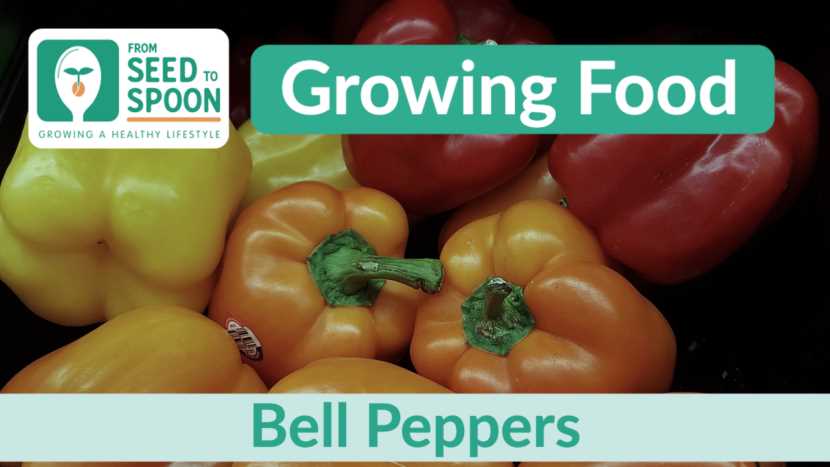
When it comes to growing sweet peppers, sowing the seeds at the right time is crucial for successful germination and healthy plant growth. The sowing dates for sweet pepper seedlings can vary depending on the region and climate. Here is a general guide to help you determine the best sowing dates for sweet pepper seedlings.
Determining Your Last Frost Date
The first step in determining the sowing dates for sweet pepper seedlings is to find out your region’s last frost date. The last frost date is the average date in spring when you can expect the last frost to occur. This date is important because sweet peppers are sensitive to frost and should not be exposed to temperatures below 55°F (13°C).
If you are unsure of your last frost date, you can check with your local agricultural extension office or look up historical weather data for your area. Knowing the last frost date will give you a guideline for when it is safe to start sowing your sweet pepper seeds.
Indoor Seed Starting
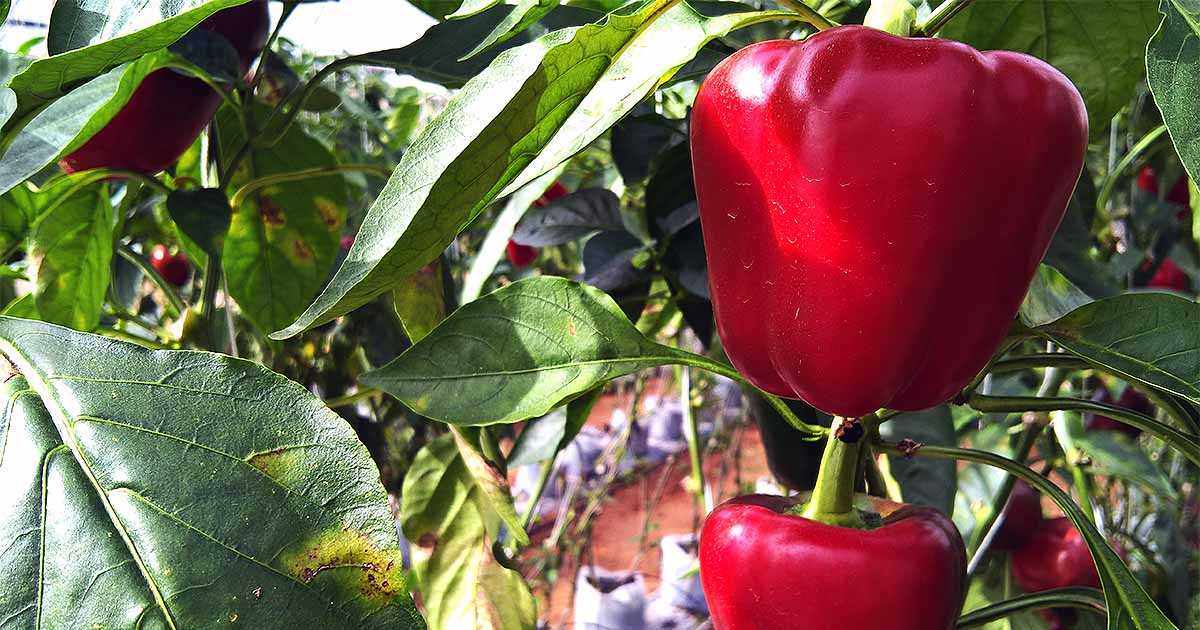
Sweet pepper seeds can be started indoors 8-10 weeks before the last frost date. This will give the seedlings enough time to grow and develop before they can be transplanted outdoors. To start the seeds indoors, follow these steps:
- Fill seed trays or pots with a well-draining seed starting mix.
- Moisten the soil and gently press the seeds into the soil, about 1/4 inch deep.
- Cover the seed trays or pots with plastic wrap or a clear plastic dome to create a mini greenhouse effect.
- Place the trays or pots in a warm location, ideally around 70-80°F (21-27°C).
- Keep the soil consistently moist but not waterlogged.
- Once the seedlings have sprouted, remove the plastic cover and place them in a well-lit area, preferably near a south-facing window or under grow lights.
Transplanting Outdoors
After the danger of frost has passed and the soil has warmed up, typically when temperatures consistently reach 60°F (15°C) or above, you can transplant your sweet pepper seedlings outdoors. This is usually around 2-3 weeks after the last frost date.
Before transplanting, harden off the seedlings by gradually acclimating them to outdoor conditions. Start by placing them outdoors for a few hours a day, gradually increasing the time over the course of a week. This will help the seedlings adjust to the sun, wind, and temperature variations.
When planting the seedlings, space them about 18-24 inches (45-60 cm) apart to allow for proper air circulation. Sweet peppers thrive in well-draining soil with full sun exposure.
Conclusion
By following this sowing dates guide for sweet pepper seedlings, you can ensure the best chance of success in growing healthy and productive plants. Remember to consider your region’s last frost date and plan accordingly for indoor seed starting and outdoor transplanting. Happy growing!
Ideal Sowing Dates for Sweet Pepper Seedlings
Sweet peppers are a popular vegetable to grow in home gardens as they are delicious and versatile. To ensure a successful pepper harvest, it is crucial to sow the seeds at the right time. The ideal sowing dates for sweet pepper seedlings will vary depending on your region and climate. Here is a general guide to help you determine when to start your sweet pepper seeds.
Early Spring Regions
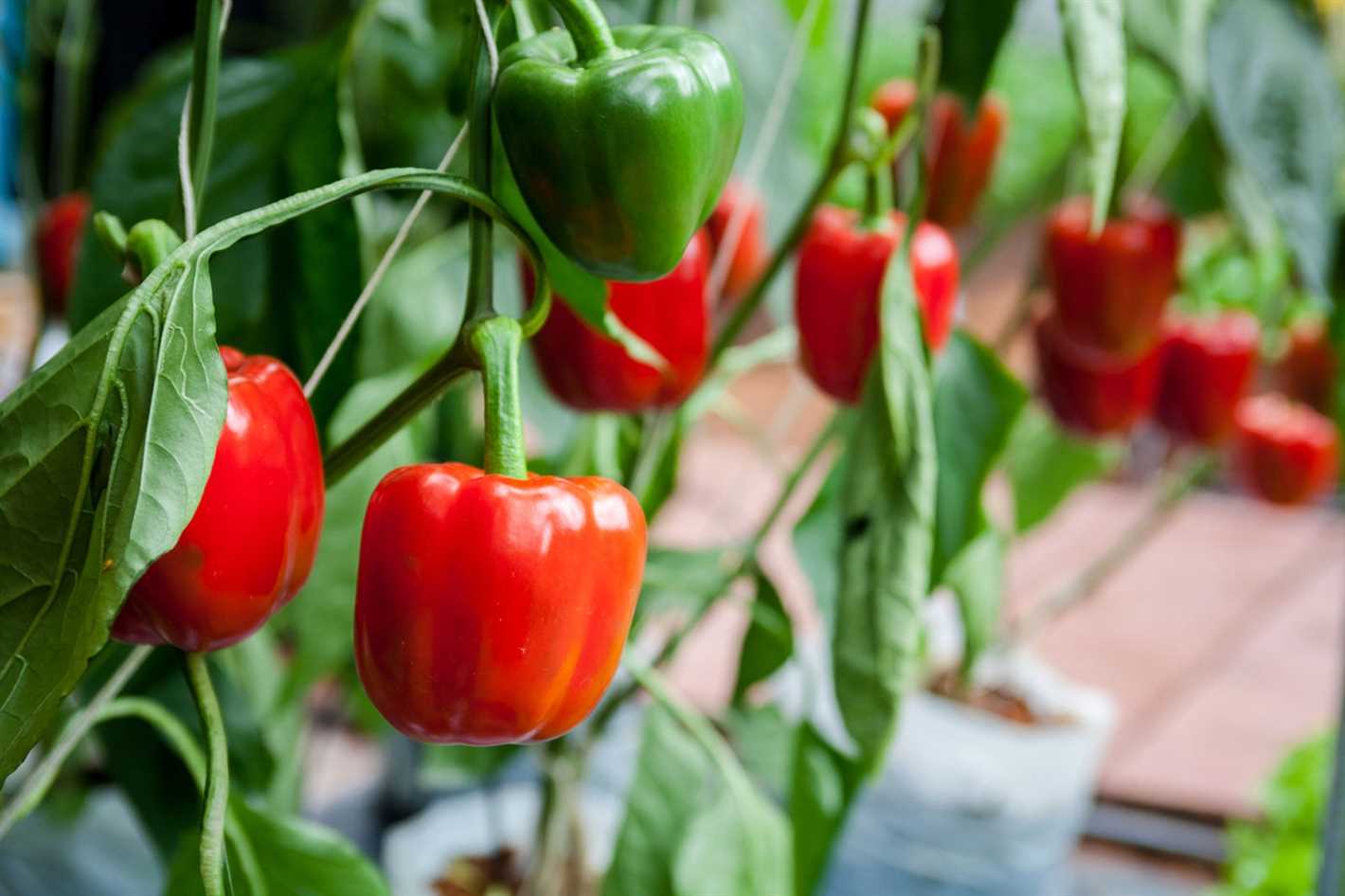
- If you live in an early spring region where the last frost date is around mid-spring, it is best to sow your sweet pepper seeds indoors 8-10 weeks before the last expected frost date. This will give the seedlings enough time to develop before they can be transplanted outdoors.
- Typically, early spring regions include areas with milder climates and longer growing seasons, such as the southern United States.
Mid-Spring to Early Summer Regions
- For regions with a mid-spring to early summer last frost date, it is recommended to start sowing sweet pepper seeds indoors 6-8 weeks before the last expected frost date.
- These regions often experience shorter growing seasons and cooler temperatures.
- By starting the seeds earlier, you give the seedlings enough time to establish strong roots and grow before the warm weather sets in.
Late Spring to Early Fall Regions
- In regions where the last frost date occurs in late spring to early fall, you can directly sow sweet pepper seeds outdoors once the soil temperature reaches around 60°F (15°C).
- These regions typically have longer growing seasons and warmer temperatures, allowing the sweet pepper seeds to germinate and grow successfully.
It is essential to check the specific frost dates and growing conditions in your region to determine the ideal sowing dates for sweet pepper seedlings. Additionally, factors such as the variety of sweet pepper and your gardening style may also influence the sowing dates.
Note: If you are unsure about the ideal sowing dates for your region, consult with local gardening experts or research gardening forums specific to your area for more accurate information.
Sowing Dates for Sweet Peppers in Different Regions
When it comes to sowing sweet peppers, the timing can vary depending on the region you are in. It’s important to consider the specific growing conditions in your area to ensure successful germination and healthy seedling growth. Here is a general guide to sowing dates for sweet peppers in different regions:
North Region
- Sowing dates: Mid to late February
- Recommended varieties: Early Bell, North Star, Viking
- Growing conditions: Start sowing sweet pepper seeds indoors, as the North region has a shorter growing season. Use grow lights or place the seedlings near a sunny window to provide sufficient light and warmth.
South Region
- Sowing dates: Early to mid-February
- Recommended varieties: California Wonder, Marconi, Sweet Banana
- Growing conditions: As the South region enjoys a longer growing season, sweet pepper seeds can be sown directly outdoors or started indoors. Ensure the soil temperature is above 60°F (15°C) for optimal germination.
East Region
- Sowing dates: Mid-February to early March
- Recommended varieties: Gypsy, Key West, Lipstick
- Growing conditions: Start sweet pepper seeds indoors around mid-February, using a seed tray or individual pots. Provide bottom heat or use a heating mat to promote germination. Transplant seedlings outdoors once the risk of frost has passed.
West Region
- Sowing dates: Mid-February to early March
- Recommended varieties: Carmen, Orange Sun, Ace
- Growing conditions: Start sweet pepper seeds indoors in mid-February and transplant the seedlings outdoors once the soil has warmed up. The West region typically has mild winters, but it’s important to protect young seedlings from any late frosts.
Remember, these are general guidelines, and the actual sowing dates may vary depending on microclimates within each region. Monitor the weather conditions and adjust your sowing dates accordingly. With the right timing and care, you can enjoy a bountiful harvest of sweet peppers!
Sowing Sweet Pepper Seedlings with Picking
If you want to have more control over the growth and development of your sweet pepper plants, you can start by sowing seedlings with picking. This method allows you to choose the strongest and healthiest seedlings to transplant into your garden or larger pots. Here is a step-by-step guide on how to sow sweet pepper seedlings with picking.
Step 1: Gather the necessary materials
- Seedling trays or pots
- Seed starting mix
- Sweet pepper seeds
- Water
- Labels or markers
Step 2: Prepare the seedling trays or pots
- Fill the trays or pots with seed starting mix, leaving about ½ inch of space from the top.
- Moisten the mix with water until it is evenly damp but not soaked.
Step 3: Sow the sweet pepper seeds
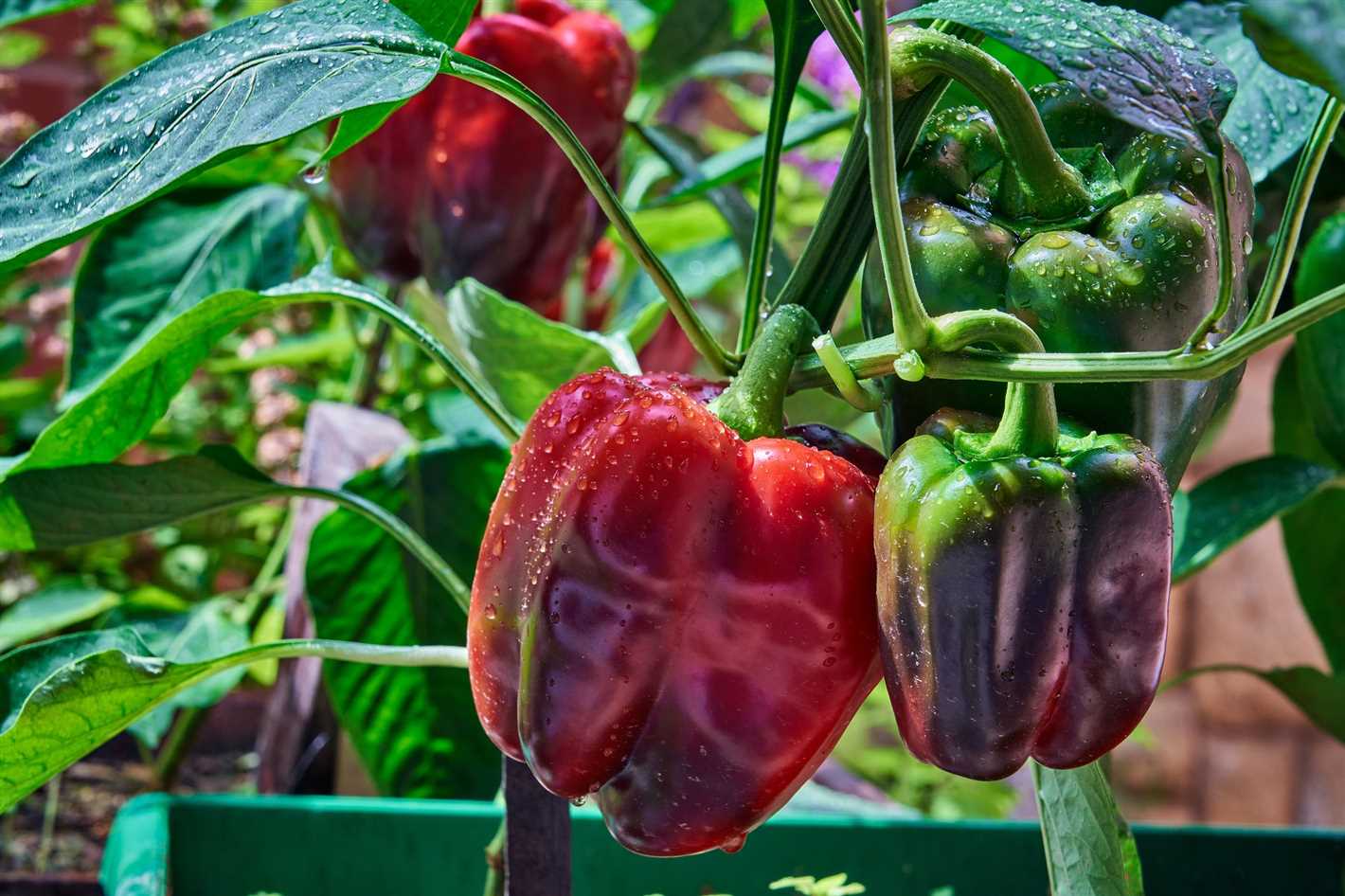
- Make small holes in the seed starting mix, about ¼ to ½ inch deep.
- Place 1-2 sweet pepper seeds in each hole and cover them with the mix.
- Water the trays or pots gently after sowing the seeds.
Step 4: Label the trays or pots
- Use labels or markers to identify the variety of sweet pepper seeds you have sown.
- This will help you keep track of their growth and development.
Step 5: Place the seedling trays or pots in a warm and bright location
- Sweet pepper seeds germinate best in temperatures between 70-85°F (21-29°C).
- Choose a location that receives at least 6-8 hours of sunlight per day or use grow lights.
Step 6: Picking the strongest seedlings
- After the sweet pepper seedlings have grown their first true leaves, it’s time to choose the strongest ones for transplanting.
- Look for seedlings that have a healthy, sturdy stem and vibrant leaves.
- Carefully lift the seedlings out of the trays or pots, taking care not to damage the roots.
- If the seedlings are growing too close together, gently separate them to avoid root entanglement.
Step 7: Transplant the seedlings
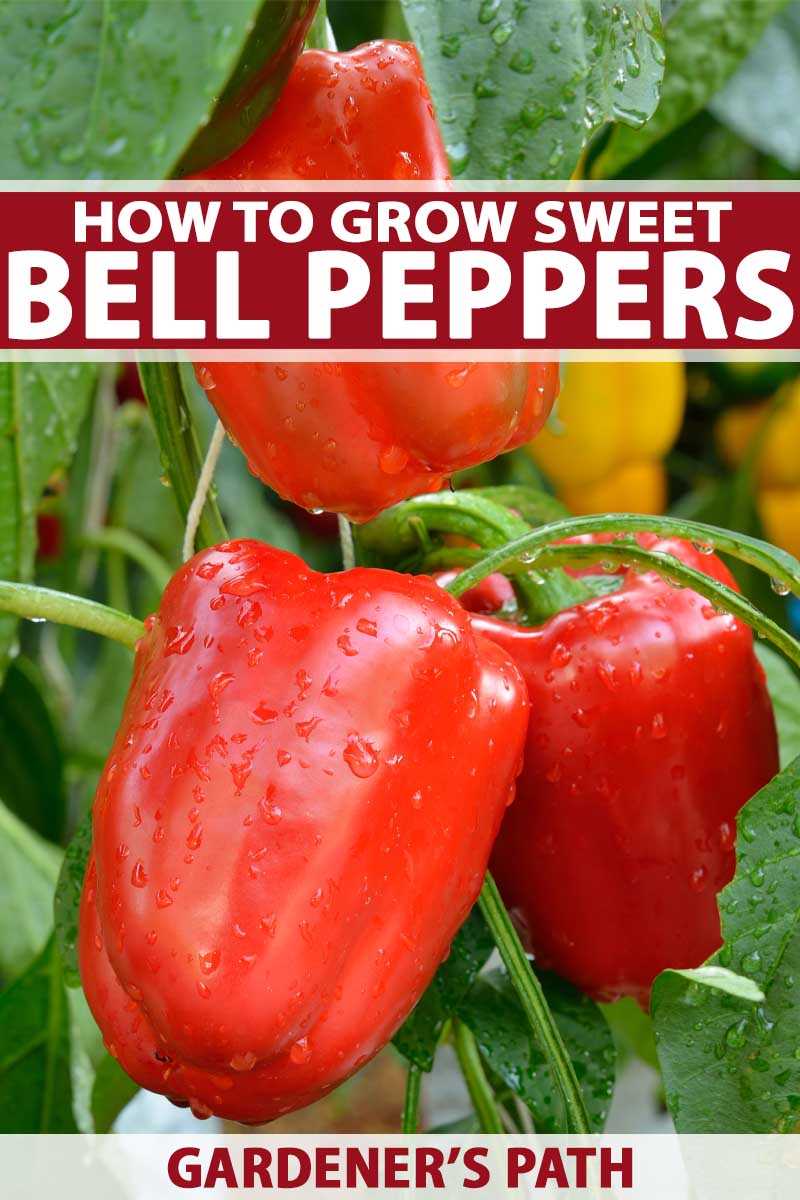
- Prepare larger pots or your garden bed for transplanting.
- Make sure the soil is well-draining and has been amended with organic matter.
- Plant the picked seedlings at the same depth as they were in the seedling trays or pots.
- Water the transplanted seedlings gently to settle the soil around their roots.
By sowing sweet pepper seedlings with picking, you can ensure that only the strongest plants make it to your garden. This method allows you to have more control over the quality and yield of your sweet pepper harvest. Happy sowing and picking!
Sowing Sweet Pepper Seedlings without Picking
If you don’t want to go through the process of picking seedlings and transplanting them, you can directly sow sweet pepper seeds into their final containers or planting beds. Here are the steps to sow sweet pepper seedlings without picking:
- Choose the right container or planting bed: Ensure that your container or planting bed is large enough to accommodate the root system of sweet pepper plants. Make sure it has good drainage to prevent waterlogging.
- Prepare the soil: Sweet peppers prefer well-draining soil that is rich in organic matter. Amend the soil with compost or well-rotted manure to improve fertility and drainage.
- Sow the seeds: Make small holes in the soil, about half an inch deep, and space the holes around 2-3 inches apart. Place one seed in each hole and cover it with soil.
- Provide proper care: Water the seeds gently, making sure not to disturb them. Keep the soil moist, but not waterlogged. Place the container or planting bed in a warm and sunny spot, as sweet peppers thrive in full sun.
- Thin out the seedlings: Once the seedlings have sprouted and developed their first set of true leaves, thin them out by removing the weaker seedlings. This will allow the remaining plants to have enough space to grow and avoid overcrowding.
- Maintain optimal growing conditions: Continue to provide consistent moisture, adequate sunlight, and regular fertilization throughout the growing season. Monitor for pests and diseases, and take appropriate action if necessary.
- Harvest sweet peppers: Depending on the variety, sweet peppers typically take around 65-85 days to mature. Harvest them when they have reached the desired size and color. Use a sharp knife or scissors to cut the peppers from the plant, leaving a short stem attached.
By sowing sweet pepper seedlings directly, you can save time and effort in the transplanting process. Just make sure to provide the right growing conditions and proper care to ensure the success of your sweet pepper plants.
Factors to Consider when Sowing Sweet Pepper Seedlings
- Variety: Different varieties of sweet peppers have different temperature and light requirements. Some varieties are more tolerant to cold or hot temperatures, while others require specific lighting conditions. It’s important to choose a variety that is suitable for the climate and growing conditions in your region.
- Sowing Date: The timing of sowing sweet pepper seedlings can greatly affect their growth and productivity. It’s important to sow the seeds at the right time to ensure optimal growth. Consider the average last frost date in your region and the time it takes for sweet pepper seedlings to grow before transplanting them outdoors.
- Lighting: Sweet pepper seedlings require at least 12-14 hours of bright light each day for proper growth. If you are sowing the seedlings indoors, ensure that they are placed in an area with ample sunlight or provide artificial lighting using grow lights if natural light is insufficient.
- Temperature: Sweet pepper seedlings prefer warm temperatures for germination and growth. The optimal temperature for germination is around 75-85°F (24-29°C). Ensure that the temperature is maintained at a suitable level throughout the growth cycle to avoid stunted growth or damage to the seedlings.
- Soil Quality: Choose a well-draining and fertile soil mix for sowing sweet pepper seedlings. The soil should be rich in organic matter and have a pH level between 6.0-7.0. Proper soil preparation and regular fertilization will provide the necessary nutrients for healthy growth.
- Watering: Adequate watering is essential for the healthy growth of sweet pepper seedlings. Keep the soil consistently moist, but not drenched, as overwatering can lead to root rot. Monitor the moisture levels regularly and adjust the watering accordingly. Avoid watering the leaves to prevent diseases.
- Transplanting: Sweet pepper seedlings should be transplanted outdoors when they have developed a strong root system and have at least 4-6 leaves. Choose a sunny spot in the garden with well-draining soil for transplanting. Harden off the seedlings by gradually exposing them to outdoor conditions before transplanting to reduce transplant shock.
- Disease and Pest Control: Sweet pepper seedlings are susceptible to various diseases and pests, such as aphids, whiteflies, and fungal diseases. Practice proper sanitation, use disease-resistant varieties, and consider using organic pest control methods to prevent and manage common problems.
By considering these factors, you can ensure successful sowing and growth of sweet pepper seedlings, ultimately leading to a bountiful harvest of delicious peppers.
Tips for Successful Sweet Pepper Seedling Sowing
When it comes to sowing sweet pepper seedlings, there are a few tips that can help ensure successful growth. Whether you are a beginner or an experienced gardener, following these tips will increase your chances of obtaining healthy and productive sweet pepper plants.
1. Start with high-quality seeds:
Using high-quality seeds is essential for successful sweet pepper seedling sowing. Look for seeds from reputable suppliers, as they are more likely to have a higher germination rate. It is also a good idea to choose varieties that are well-suited to your region and growing conditions.
2. Proper timing:
Sweet peppers require a longer growing season, so it is important to start them early enough to allow for sufficient growth before transplanting them outdoors. Sow the seeds indoors 8-10 weeks before the last frost date in your region. This timing will give the seedlings ample time to develop before being moved to the garden.
3. Use a well-draining soil mix:
Sweet pepper seedlings prefer a well-draining soil mix to avoid the risk of root rot. Use a seed starting mix or make your own using a combination of peat moss, perlite, and vermiculite. This will provide a light and airy texture that allows for proper root development.
4. Provide adequate light:
Sweet pepper seedlings need plenty of light to grow strong and healthy. Place them in a location that receives at least 6-8 hours of direct sunlight each day. If growing them indoors, consider using fluorescent or LED grow lights to supplement natural light.
5. Maintain consistent moisture:
To ensure successful germination and growth, sweet pepper seedlings need consistent moisture. Keep the soil evenly moist, but be careful not to overwater, as this can lead to damping-off disease. Water the seedlings from the bottom by placing the containers in a tray of water and allow them to soak up the moisture.
6. Harden off seedlings before transplanting:
Before transplanting sweet pepper seedlings into the garden, it is important to harden them off. This process involves gradually exposing the seedlings to outdoor conditions over a period of 7-10 days. Start by placing them in a sheltered location for a few hours each day, gradually increasing the exposure to sunlight and outdoor temperatures.
7. Transplant with care:
When transplanting sweet pepper seedlings into the garden, handle them carefully to avoid damaging the delicate roots. Dig a hole large enough to accommodate the roots and gently place the seedling into the hole. Fill in the hole with soil, firming it gently around the base of the seedling.
8. Provide proper support:
As sweet pepper plants grow, they can become heavy with fruits. To prevent the plants from bending or breaking, provide support such as stakes or cages. This will help keep the plants upright and ensure a higher yield of peppers.
By following these tips, you can increase your chances of sowing successful sweet pepper seedlings and enjoy a bountiful harvest of delicious peppers.
Preparing the Soil for Sweet Pepper Seedlings
Before sowing sweet pepper seedlings, it is important to prepare the soil to provide the best conditions for their growth. Here are some steps to follow:
1. Choose the right location:
Select a sunny spot in your garden where the sweet pepper seedlings can receive at least 6-8 hours of direct sunlight daily. The soil should be well-draining to prevent waterlogging, which can lead to root rot.
2. Clear the area:
Remove any weeds, rocks, or debris from the planting area. Weeds can compete with the seedlings for nutrients and water, so it is essential to eliminate them before planting.
3. Loosen the soil:
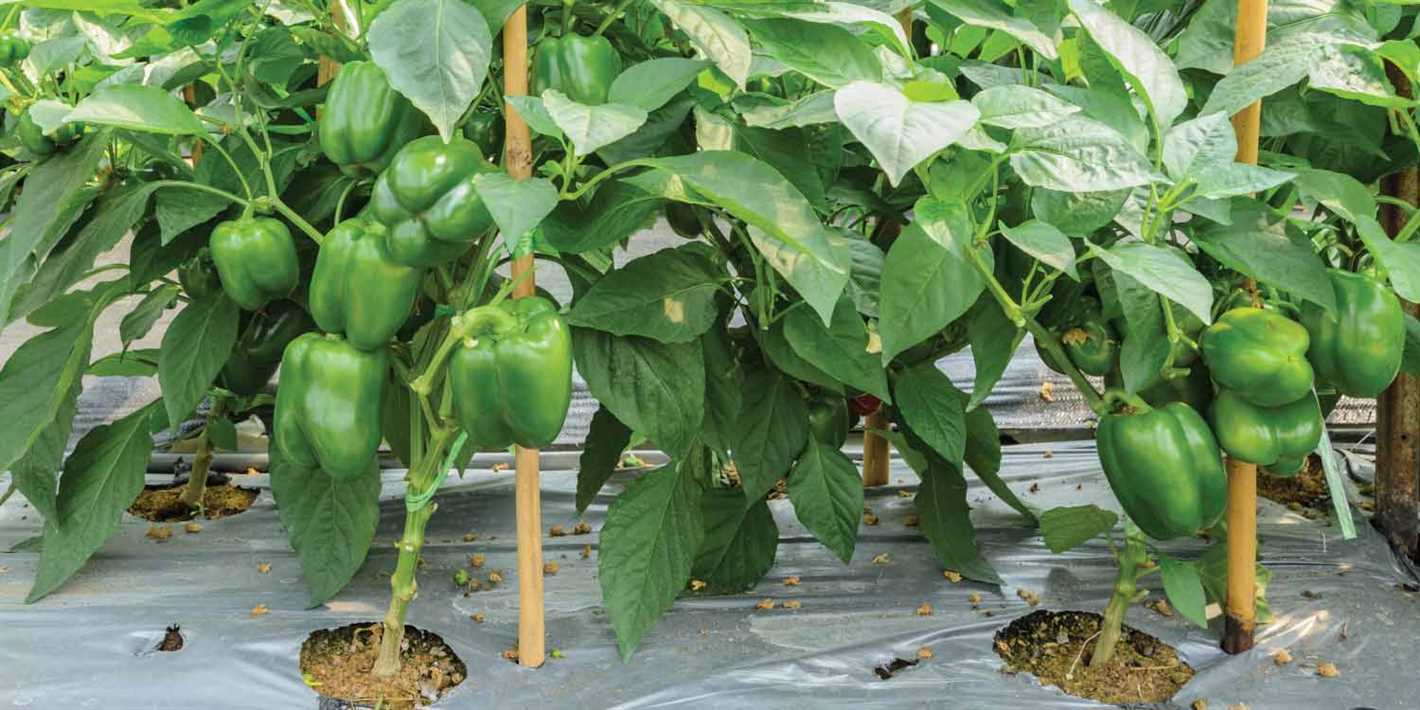
Use a garden fork or a tiller to loosen the soil to a depth of at least 12 inches. This will improve drainage and allow the roots to penetrate easily. Avoid tilling when the soil is wet, as it can lead to soil compaction.
4. Add organic matter:
Mix in well-rotted compost or aged manure to improve the soil’s fertility and structure. Organic matter helps retain moisture and provides essential nutrients for the sweet pepper seedlings.
5. Adjust soil pH:
Sweet peppers prefer a slightly acidic soil with a pH level between 6.0 and 6.8. Test the soil pH using a soil testing kit and make necessary adjustments by adding lime to raise the pH or sulfur to lower it.
6. Incorporate fertilizer:
Before sowing the seedlings, incorporate a balanced fertilizer into the soil according to the package instructions. This will provide the necessary nutrients for the young plants to grow and develop.
By following these steps and preparing the soil properly, you will create an optimal environment for your sweet pepper seedlings to thrive and produce abundant peppers.
Maintaining and Caring for Sweet Pepper Seedlings
Once your sweet pepper seedlings have emerged, it’s important to provide them with proper care and maintenance to ensure their healthy growth. Here are some tips to help you maintain and care for your sweet pepper seedlings:
1. Watering
Water your sweet pepper seedlings regularly, making sure the soil is moist but not soggy. Avoid overwatering, as it can lead to root rot. Water the plants at the base to prevent wetting the leaves, as this can make them susceptible to diseases.
2. Providing adequate light
Sweet pepper seedlings need plenty of bright light to grow well. Place them in a sunny location or provide artificial lighting if necessary. Make sure to rotate the plants regularly to ensure even growth and prevent them from leaning towards the light source.
3. Transplanting
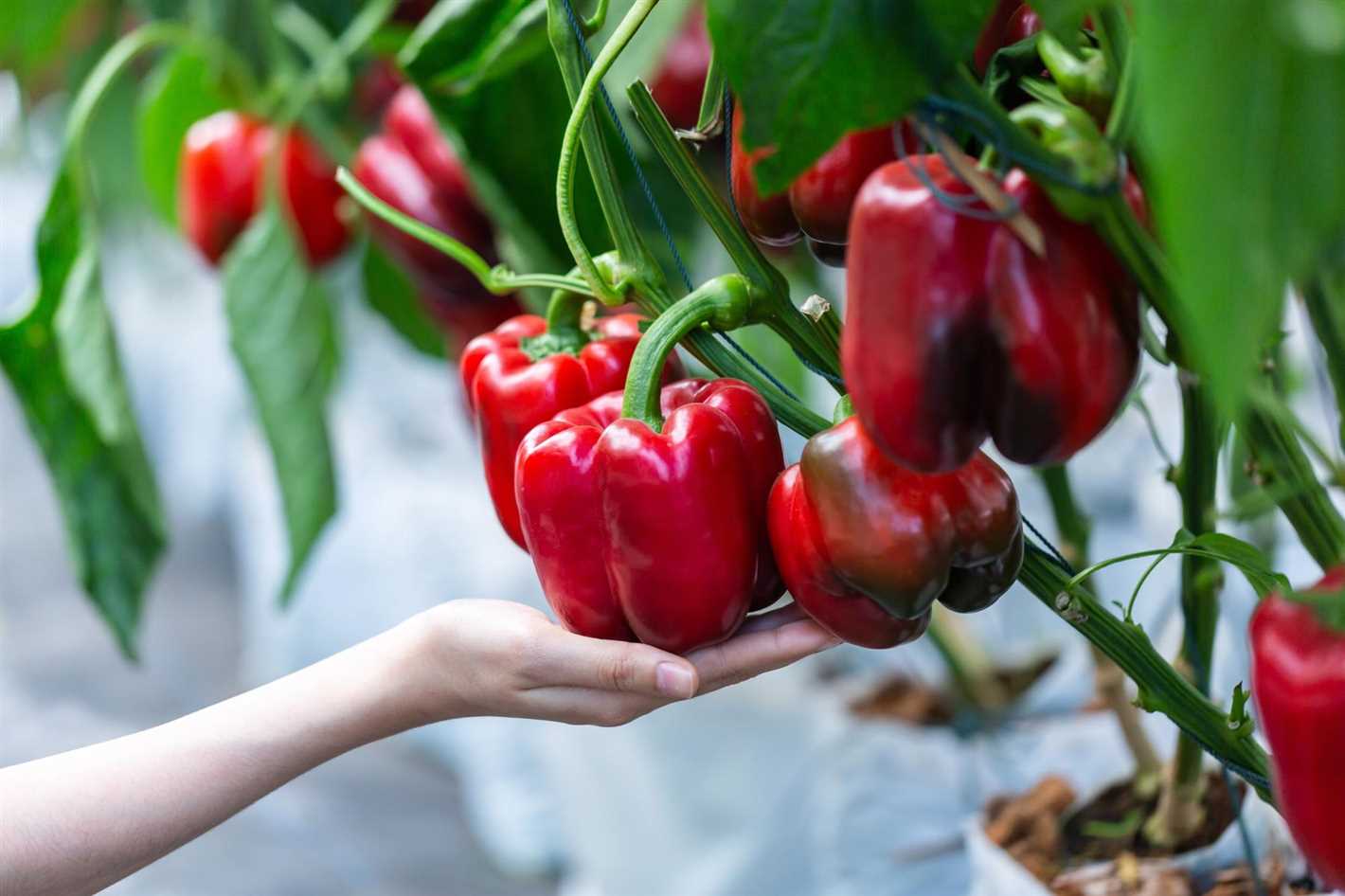
If you started your sweet pepper seedlings in containers, transplant them into larger pots or into the garden once they have developed a strong root system. Be gentle when handling the seedlings to avoid damaging the roots. Space the plants adequately to allow for proper air circulation.
4. Fertilizing
Feed your sweet pepper seedlings with a balanced fertilizer once they have developed two sets of true leaves. Follow the instructions on the fertilizer packaging for the correct application rate. Fertilize the plants regularly, following the recommended schedule for your specific fertilizer.
5. Pest and disease control
Monitor your sweet pepper seedlings for any signs of pests or diseases. Common pests that can affect sweet peppers include aphids, spider mites, and whiteflies. Use organic or chemical pesticides as needed, following the instructions on the packaging. Remove any infected or diseased plants to prevent the spread of diseases.
6. Support and pruning
As your sweet pepper plants grow, they may need support to prevent them from falling over. Use stakes, cages, or trellises to support the plants and keep the fruits off the ground. Prune the plants to remove any dead or damaged leaves and promote better air circulation.
7. Harvesting
Once your sweet pepper seedlings have matured and the fruits have reached the desired size, they are ready for harvest. Use a sharp knife or scissors to cut the peppers from the plants, leaving a short stem attached. Harvest regularly to encourage continuous fruit production.
By following these care and maintenance tips, you can ensure the healthy growth and productivity of your sweet pepper seedlings, allowing you to enjoy a bountiful harvest of delicious peppers.
“Question-Answer”
What are sweet peppers?
Sweet peppers are a type of vegetable that belong to the species Capsicum annuum. They are characterized by their bell-shaped fruits which can come in various colors, such as green, yellow, orange, or red.
When is the best time to sow sweet pepper seeds?
The best time to sow sweet pepper seeds is around 8-10 weeks before the last frost date in your region. This will give the seedlings enough time to grow and develop before transplanting them outdoors.
Can I sow sweet pepper seeds directly in the ground?
It is possible to sow sweet pepper seeds directly in the ground, but it is generally recommended to start them indoors as seedlings. This allows for better control of growing conditions and gives the plants a head start.
Do sweet pepper seedlings need to be thinned or picked?
It is generally not necessary to thin or pick sweet pepper seedlings, as they can be planted individually in containers or cell trays. This eliminates the need for transplantation and reduces the risk of damaging the delicate root system.
What is the ideal temperature for sweet pepper seed germination?
The ideal temperature for sweet pepper seed germination is around 75-85°F (24-29°C). Providing a consistent and warm environment will promote faster and more successful germination.
Can I sow sweet pepper seeds later than the recommended time?
While it is possible to sow sweet pepper seeds later than the recommended time, it may result in a shorter growing season and smaller harvest. It is generally best to follow the recommended sowing dates to ensure optimal growth and yield.
How often should I water sweet pepper seedlings?
Sweet pepper seedlings should be watered regularly to keep the soil evenly moist, but not waterlogged. Depending on the weather conditions and the moisture level of the soil, this may require watering every 2-3 days.







